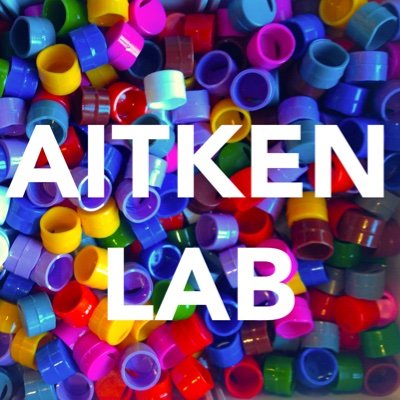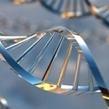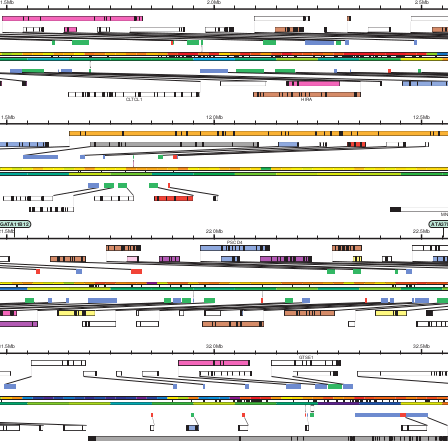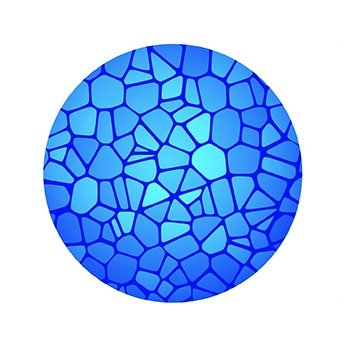
abeldavidgp
@abel_gonzalezp
Followers
179
Following
322
Media
4
Statuses
284
Researching in cancer genomics: from the underlying reason for mutations to the evolution of tumors.
Joined August 2021
Molt content de rebre el premi de Jove Investigador de la Societat Catalana de Biologia @SCB_iec ! 😃🥳 Moltes gràcies pel reconeixement i per donar suport a la recerca que fem a casa. Gràcies també a la @nlbigas i a l'@abel_gonzalezp per la guia i la confiança🤗🙏🏾
10
2
97
0
2
12
Our colleague Joan Enric Ramis ( @JoanEenric) is participating in #EHA2023. He presents his work on clonal hematopoiesis driver mutations with a poster. 🧬🏥💻
0
6
21
📢We are hiring! The IBI group (@GRIB_Barcelona) is looking for a student who can offer technical support for the tools generated in the group. 👉 https://t.co/2MPwr1NhRv
#TalentIMIM
0
3
6
Really interesting talks and discussions at the Genome Stability Network meeting on Friday! Here is @clarnedo giving an excellent presentation about her work on how signatures 1 and 17 show create mutational hotspots in the human genome Read more here: https://t.co/1s1OypasCX
Looking forward to seeing everyone at the GSN 2023 meeting this week. Drinks reception from 7-9.30 pm at Caius College on Thursday 12th. Sessions start at 10 am at West Road Concert Hall on Friday 13th. Will be great to meet up person and listen to some exciting science!
0
9
15
We are having a winter break. We wish you all the best for these days and for the new year!! 🧬🎉🎄🧬🎉🎄
0
5
7
@f_calvet presenting his great work on genome annotation GeneidX 🧬👨💻 #JBG2022
https://t.co/HahCyLydC2
0
7
15
Interested in spatial biology and cancer evolution? New spatial genomics technologies start unraveling how somatic evolution, tissue microanatomy and tumour microenvironments interact. New review with @Yates_lab @LomakinAI and @zaira_sef
https://t.co/O6ejJOypdx
nature.com
Nature Reviews Genetics - In this Review, the authors discuss our latest understanding of the spatial aspects of cancer evolution, including the roles of cancer subclonal structure, tissue...
2
45
115
Congratulations to everyone involved in creating this great multi-omic Developmental Lung Cell Atlas, revealing the cell types involved in the developing human lung and their interactions. @CellCellPress
The developing human lung has been mapped in unprecedented detail, identifying 144 cell types in the early stages of life Acting as a guidebook to healthy lung development, this can be used to investigate how #lungdiseases originate Read more 👇🏻 https://t.co/wJrmnZz6m3
1
32
128
Today we had the visit of @carlotarp_, former PhD student at @bbglab She has an amazing career trajectory. Bilogy>Bioinformatics>PhD>postdoc>Medicine>and now clinical oncology residence at @hospitalclinic Thanks for your visit and Carrer talk to the lab Very proud of you
1
3
71
Inspiring ideas and a buzzing brainstorm to suggest the next set of #cancergrandchallenges. Masterfully chaired by Karen Vousden (@LabVousden) and Nuria Lopez-Bigas (@nlbigas). Sean Hanlon representing @theNCI in this joint venture with @CRUKresearch. Thanks everyone!
1
6
13
You can read the whole story in our (Santiago Gonzalez, @nlbigas, @bbglab) preprint: https://t.co/fTFma6ETxY. Special acknowledgements to patients, families and researchers making data available (10/n)
biorxiv.org
Recently, distinct mutational footprints observed in metastatic tumors, secondary malignancies and normal human tissues have been demonstrated to be caused by the exposure to several chemotherapeutic...
0
0
0
Moreover, the number of chromosomal fragments that constitute the CN footprint significantly correlates with the intensity of the exposure to platinum, measured as the number of platinum-related point mutations (9/n)
1
0
1
This is consistent across cancer types, replicates in an independent cohort (POG 570; https://t.co/yFId7Q7qOC), and is visible across tumors with and without WGD (8/n)
1
0
1
Comparing tumors exposed and unexposed to different treatments, we identified a platinum-related CN footprint consisting of increased number of chromosomal fragments shorter than 40 Mbp (7/n)
1
0
1
So, we focused first on tumors with whole genome doubling (WGD) in the expectation that, due to relaxation of negative selection, these harbor more copy number events associated with treatment (6/n)
1
0
1
We anticipated that copy number footprints are more difficult to detect than point mutation footprints, as copy number events are rarer than point mutations (5/n)
1
0
1
To answer, we turned to advanced metastatic tumors in the Hartwig Medical Foundation (@HartwigMedical) cohort from patients who were exposed to several types of treatment (4/n)
1
0
2
But we kept wondering if chemotherapies like platinum drugs also cause specific footprints of changes in copy number (3/n)
1
0
1













